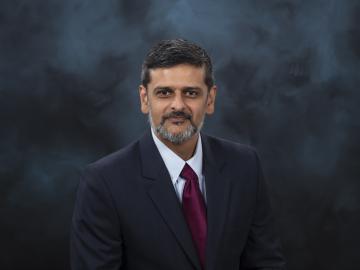Filter News
Area of Research
- Advanced Manufacturing (3)
- Biology and Environment (18)
- Clean Energy (60)
- Computational Engineering (1)
- Computer Science (5)
- Electricity and Smart Grid (1)
- Functional Materials for Energy (2)
- Fusion and Fission (4)
- Isotopes (1)
- Materials (47)
- Materials for Computing (7)
- National Security (12)
- Neutron Science (10)
- Nuclear Science and Technology (2)
- Quantum information Science (2)
- Supercomputing (46)
News Type
News Topics
- (-) Bioenergy (25)
- (-) Computer Science (62)
- (-) Energy Storage (44)
- (-) Machine Learning (14)
- (-) Microscopy (18)
- (-) Polymers (13)
- (-) Quantum Computing (10)
- (-) Sustainable Energy (37)
- 3-D Printing/Advanced Manufacturing (50)
- Advanced Reactors (12)
- Artificial Intelligence (31)
- Big Data (12)
- Biology (23)
- Biomedical (18)
- Biotechnology (7)
- Buildings (16)
- Chemical Sciences (33)
- Clean Water (1)
- Climate Change (25)
- Composites (10)
- Coronavirus (17)
- Critical Materials (11)
- Cybersecurity (18)
- Decarbonization (22)
- Education (3)
- Element Discovery (1)
- Environment (45)
- Exascale Computing (12)
- Fossil Energy (1)
- Frontier (16)
- Fusion (14)
- Grid (18)
- High-Performance Computing (31)
- Irradiation (1)
- Isotopes (20)
- ITER (2)
- Materials (69)
- Materials Science (54)
- Mercury (2)
- Molten Salt (2)
- Nanotechnology (28)
- National Security (20)
- Net Zero (4)
- Neutron Science (56)
- Nuclear Energy (32)
- Partnerships (28)
- Physics (24)
- Quantum Science (28)
- Renewable Energy (1)
- Security (11)
- Simulation (11)
- Software (1)
- Space Exploration (3)
- Statistics (2)
- Summit (21)
- Transformational Challenge Reactor (4)
- Transportation (30)
Media Contacts

Anuj J. Kapadia, who leads the Advanced Computing in Health Sciences Section at the Department of Energy’s Oak Ridge National Laboratory, was named a 2024 Fellow by the American Association of Physicists in Medicine.

Phani Ratna Vanamali Marthi, an R&D associate in the Power Systems Resilience group at ORNL, has been elevated to the grade of senior member of the Institute of Electrical and Electronics Engineers, the world’s largest technical professional organization

Erin Webb, lead for the Bioresources Science and Engineering group at Oak Ridge National Laboratory, has been elected a Fellow of the American Society of Agricultural and Biological Engineers — the society’s highest honor.

Researchers at ORNL are developing battery technologies to fight climate change in two ways, by expanding the use of renewable energy and capturing airborne carbon dioxide.

Joseph Chapman, a research scientist in quantum communications at ORNL, was given the Physical Review Applied Reviewer Excellence 2024 award for his work as a peer reviewer for the journal Physical Review Applied.

Scientists at ORNL completed a study of how well vegetation survived extreme heat events in both urban and rural communities across the country in recent years. The analysis informs pathways for climate mitigation, including ways to reduce the effect of urban heat islands.

Scientists at the Department of Energy’s Oak Ridge National Laboratory have developed lubricant additives that protect both water turbine equipment and the surrounding environment.

Rigoberto “Gobet” Advincula, a scientist with joint appointments at ORNL and the University of Tennessee, has been named a Fellow of the American Institute for Medical and Biological Engineering.

Forrest Hoffman, a distinguished scientist at the Department of Energy’s Oak Ridge National Laboratory, has been named a senior member of the Institute of Electrical and Electronics Engineers, the world’s largest organization for technical professionals.

A first-ever dataset bridging molecular information about the poplar tree microbiome to ecosystem-level processes has been released by a team of DOE scientists led by ORNL. The project aims to inform research regarding how natural systems function, their vulnerability to a changing climate and ultimately how plants might be engineered for better performance as sources of bioenergy and natural carbon storage.




